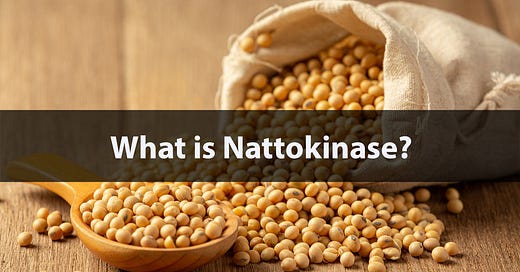The AstraZeneca COVID-19 vaccine made plenty of headlines in 2021; not all were positive. When a healthy, 37-year-old Norwegian woman was hospitalized with terrible and persistent headaches, only to die from a blood clot in the brain a few days later, the culprit quickly became apparent. The new COVID shot was to blame.
The discovery that AstraZeneca was associated with a rare side effect called vaccine-induced immune thrombotic thrombocytopenia spurred a wave of panic. It didn’t get any better when the Johnson & Johnson jab also turned out to come with a higher risk of rare blood clots, this time in the form of thrombosis with thrombocytopenia syndrome.
The chilling truth that most people aren’t aware of?
COVID vaccines may have been new, but vaccine-related blood clots aren’t. The MMR vaccine and the annual flu shot can also potentially cause rare and deadly blood clots. The problem isn’t limited to vaccines, either. Heparin, a well-known blood thinner, occasionally has the same effect.
Scary? Yes, especially if you are proactive about your health and well-being. Common? No, not. Healthcare authorities worldwide are adamant about one thing — the benefits of vaccination outweigh the risks, and blood clotting events after vaccination are extremely rare.
Still, is that a risk you want to take? What if you don’t have to?
Nattokinase, a unique enzyme found in a distinctive Japanese fermented food called natto, can save you from sharing the fate of the 37-year-old Norwegian woman who died from the very shot she must have considered life-saving.
More good news? If the thought of natto — which is unquestionably an acquired taste — makes you gag, you don’t have to suffer the misfortune of eating it. You can get Nattokinase supplements instead.
What Is Natto?
Natto is a traditional Japanese fermented food made with soybeans and a unique bacterium called Bacillus subtilis var natto.
You'll consider natto a delicacy if you’ve grown up with it. If not, you probably fall into one of two camps — you may be a culinary adventurer who quickly falls in love with acquired tastes or someone who’s put off to an extreme degree.
Because pictures of natto tell part of the story, but (thankfully) nobody has invented “smell-o-vision” yet, let’s explore the experience of eating this unique fermented dish more deeply:
The fermentation process makes natto sticky and slimy.
Some people say natto smells like cheese or a barn. Either way, it’s quite pungent.
Natto has a nutty, savory, salty, and fermented flavor.
Haven’t tried it yet? Get some natto if you can, and eat it more than once. Natto grows on you.
Why should you learn to love natto? Well, a healthier digestive system, better heart health, stronger bones, an immune system boost, and potential weight loss are just a few benefits associated with this pungent dish. But there’s more.
What Is Nattokinase?
Nattokinase is an enzyme found in natto — and only in natto.
To lead with the most important information, some exciting scientific evidence suggests that Nattokinase has clot-busting powers (or, to put it in more medical terms, fibrinolytic properties). Some people routinely use Nattokinase to manage their risk of blood clots or improve cardiovascular health, but it’s also a great way to reduce your risk of blood clots after receiving a vaccine.
While plenty of scientific studies have explored the clot-busting benefits of Nattokinase, people interested in learning more should consider reading:
Nattokinase: A Promising Alternative in Prevention and Treatment of Cardiovascular Diseases. This study dives into the various uses of Nattokinase as a natural medicine, including the power of Nattokinase as a weapon against blood clots.
Nattokinase Improves Blood Flow by Inhibiting Platelet Aggregation and Thrombus Formation. Research that specifically delves into the clot-dissolving properties of Nattokinase.
Interested? You can get Nattokinase by eating Natto, but you don’t have to.
Whether you hate the original dish's look, smell, and taste or prefer knowing exactly how much Nattokinase you’re getting, you can also order and take supplements.
Pure Nattokinase can be extracted directly from natto, after which it’s further processed to isolate the enzyme and create a “clean” supplement. You’ll find quality Nattokinase all over the internet, allowing you to reap most of natto’s benefits without being subjected to the fermented soybean dish.
How Should You Take Nattokinase as a Post-Vaccine Blood Clot Prevention Therapy?
The three types of vaccines especially associated with potentially rare blood clots are COVID-19 vaccinations, annual flu shots, and the MMR vaccine. However, you can take Nattokinase supplements before and after any vaccine — or every day to improve your general health.
After vaccination, people affected by blood clots usually experience them within seven days, but you may want to build a “buffer” to maximize the protection you get from Nattokinase.
Here’s what you need to know:
Most people taking Nattokinase to reduce the risk of blood clots take 2000FU a day, but the first study shown above shows that 1000FU is also effective.
Nattokinase is best taken on an empty stomach, so taking your supplement before breakfast or bed (but several hours after dinner) makes sense.
You could start taking Nattokinase supplements one week before you are due to be vaccinated and continue for two weeks after.
A Final Word
Nattokinase has emerged as a powerful post-vaccine therapy to help prevent the rare but deadly side effect of blood clots. However, the health-boosting properties of natto and Nattokinase aren’t new and extend to a stronger immune system and healthier bones. If you like, you can keep taking Nattokinase for as long as you like — or go a step further and learn to love natto.






